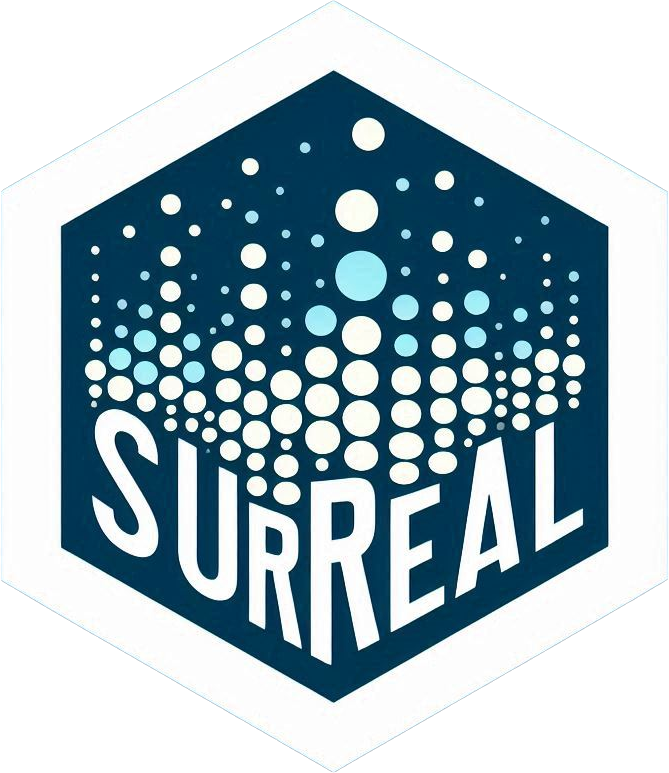Ever wanted to hide secret messages or images in your data? That’s what the surreal package does! It lets you create datasets with hidden images or text that appear when you plot the residuals of a linear model by providing an implementation of the “Residual (Sur)Realism” algorithm described by Stefanski (2007).
Installation
You can install surreal from CRAN:
install.packages("surreal")Or get the latest version from GitHub:
# install.packages("remotes")
remotes::install_github("coatless-rpkg/surreal")Usage
First, load the package:
Once loaded, we can take any series of (x, y) coordinate positions for an image or a text message and apply the surreal method to it.
Importing Data
As an example, let’s use the built-in R logo dataset:
data("r_logo_image_data", package = "surreal")
plot(r_logo_image_data, pch = 16, main = "Original R Logo Data")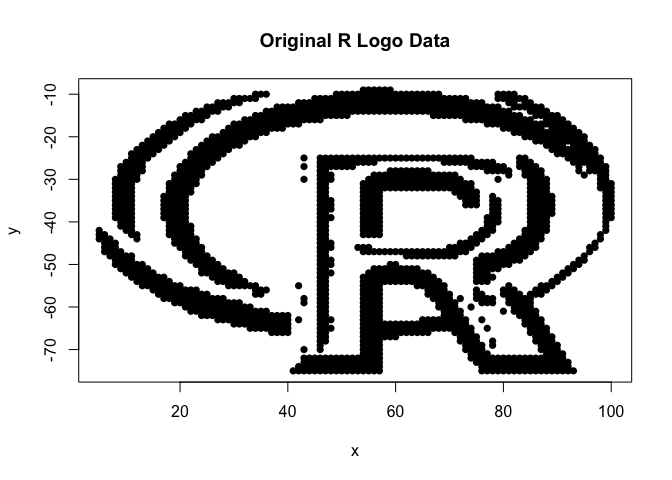
The data for the R logo is stored in a data frame with two columns, x and y:
str(r_logo_image_data)
#> 'data.frame': 2000 obs. of 2 variables:
#> $ x: int 54 55 56 57 58 59 34 35 36 49 ...
#> $ y: int -9 -9 -9 -9 -9 -9 -10 -10 -10 -10 ...
summary(r_logo_image_data)
#> x y
#> Min. : 5.00 Min. :-75.00
#> 1st Qu.: 32.00 1st Qu.:-57.00
#> Median : 57.00 Median :-39.00
#> Mean : 55.29 Mean :-40.48
#> 3rd Qu.: 77.00 3rd Qu.:-24.00
#> Max. :100.00 Max. : -9.00Applying the Surreal Method
Now, let’s apply the surreal method to the R logo data to hide it in a dataset. We’ll want to set a seed for reproducibility purposes since the algorithm relies on an optimization routine:
We can note that the transformed data has additional covariates that obfuscate the original image. If we observe the transformed data by using a scatterplot matrix graph, we can see that the new covariates do not reveal the original image:
pairs(y ~ ., data = transformed_data, main = "Data After Transformation")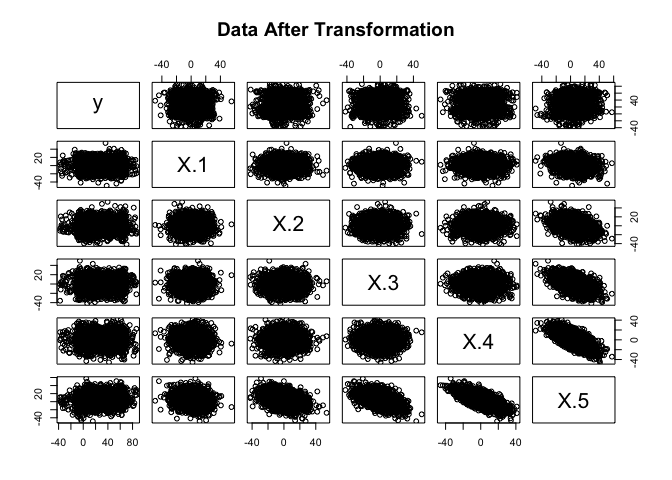
Revealing the Hidden Image
We need to fit a linear model to the transformed data and plot the residuals:
model <- lm(y ~ ., data = transformed_data)
plot(model$fitted, model$resid, pch = 16,
main = "Residual Plot: Hidden R Logo Revealed")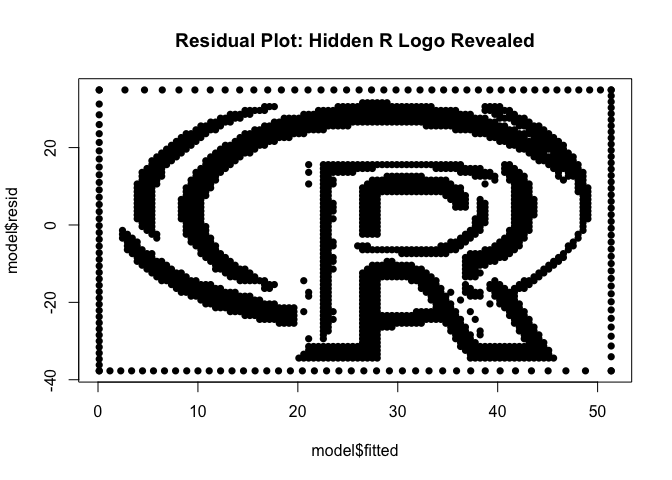
The residual plot reveals the original R logo with a slight border. This border is automatically added inside the surreal method to enhance the recovery of the hidden image in the residual plot.
Hide Your Own Message
Want to hide your own message? You can also create datasets with custom text:
# Generate a dataset with a hidden message across multiple lines
message_data <- surreal_text("R\nis\nawesome!")
# Reveal the hidden message
model <- lm(y ~ ., data = message_data)
plot(model$fitted, model$resid, pch = 16,
main = "Custom Message in Residuals")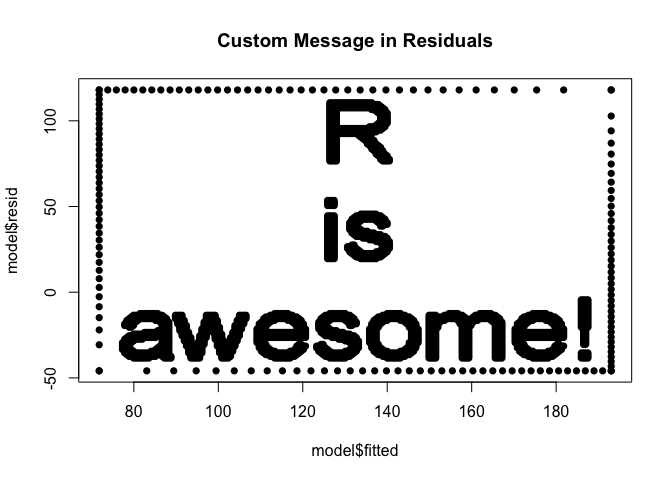
References
Stefanski, L. A. (2007). “Residual (Sur)realism”. The American Statistician, 61(2), 163-177. doi:10.1198/000313007X190079
Acknowledgements
This package is based on Stefanski (2007) and builds upon earlier R implementations by John Staudenmayer, Peter Wolf, and Ulrike Gromping.
